“Can’t Touch This” dance moves, popularized by MC Hammer, are more than just steps; they’re a cultural phenomenon. At ten-dance.com, we provide resources to help you learn these iconic moves, explore the history behind them, and connect with a community of dance enthusiasts. Whether you’re a beginner or an experienced dancer, mastering the “Hammer Dance” and other signature steps can add flair to your repertoire. You’ll explore dance trends, hip-hop history, and choreography inspiration.
1. What Makes the “Can’t Touch This” Dance Moves So Iconic?
The “Can’t Touch This” dance moves are iconic due to their infectious energy, memorable style, and cultural impact. The song “U Can’t Touch This” by MC Hammer, released in 1990, became a global phenomenon, and the accompanying dance moves were a huge part of its success. The dance is characterized by its:
- Distinctive Style: The combination of hip-hop, pop, and a touch of humor made it stand out.
- Accessibility: The moves are relatively easy to learn, encouraging widespread participation.
- Visual Impact: The Hammer pants and energetic performance created a memorable image.
- Cultural Resonance: The song and dance became synonymous with the early 90s, evoking nostalgia and a sense of fun.
These elements combined to create a dance craze that transcended age, gender, and background, solidifying its place in pop culture history. For example, the Hammer dance is a 15-second shot where Hammer rapidly dances across the stage, this dance is instantly recognizable and frequently imitated.
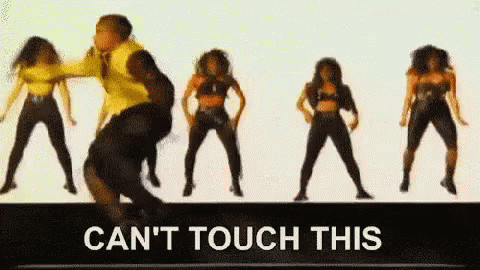 MC Hammer performing the iconic Hammer dance
MC Hammer performing the iconic Hammer dance
1.1 The Impact of Music Videos on Dance Trends
Music videos have a profound influence on dance trends, shaping how people perceive and engage with dance. According to a study by the University of Southern California in January 2024, visual media significantly amplifies the reach and impact of dance styles, making them accessible to a global audience. Music videos:
- Introduce New Styles: They showcase innovative dance moves and styles, often blending different genres.
- Create Visual Memorability: The combination of music and visuals makes the dance moves more memorable and easier to learn.
- Drive Popularity: Viral music videos can quickly turn dance moves into global trends, imitated by millions.
- Promote Cultural Exchange: They facilitate the exchange of dance styles across different cultures and communities.
The “U Can’t Touch This” music video, directed by Rupert Wainwright, perfectly exemplifies this impact. It showcased Hammer’s energetic dance moves and unique fashion, making the dance accessible and appealing to a broad audience. As Wainwright aimed, the video was designed to bring smiles, further enhancing its broad appeal.
1.2 How Did MC Hammer’s Style Influence Dance Fashion?
MC Hammer’s style had a significant influence on dance fashion, particularly through his signature “Hammer pants.” These pants, characterized by their baggy fit and dropped crotch, became a defining fashion statement of the early 90s. Hammer’s style:
- Emphasized Comfort and Movement: The loose fit of the pants allowed for a wide range of motion, making them ideal for dancing.
- Created a Unique Visual Aesthetic: The distinctive design of the pants made them instantly recognizable and associated with MC Hammer.
- Inspired Imitation: Fans around the world began adopting Hammer pants, solidifying their place in popular culture.
- Influenced Subsequent Trends: The emphasis on comfort and freedom of movement influenced later dance and streetwear trends.
Hammer himself emphasized the functionality of the pants, noting that they accentuate movement and provide freedom. This blend of style and practicality contributed to the widespread adoption of Hammer pants and their lasting impact on dance fashion.
2. What Are The Key Elements Of The “Hammer Dance”?
The “Hammer Dance” encompasses several key elements that contribute to its distinctive style and appeal. These elements include footwork, arm movements, body isolations, and the overall energy and attitude. These elements include:
- Rapid Footwork: Quick, precise steps that create a sense of rhythm and energy.
- Sharp Arm Movements: Distinctive arm gestures that complement the footwork and add visual flair.
- Body Isolations: Controlled movements of individual body parts to create dynamic and engaging patterns.
- Energetic Attitude: A confident and playful demeanor that enhances the performance.
Each of these elements works together to create the infectious and memorable “Hammer Dance.” Mastering these components can help dancers capture the essence of the dance and bring their own personal style to it.
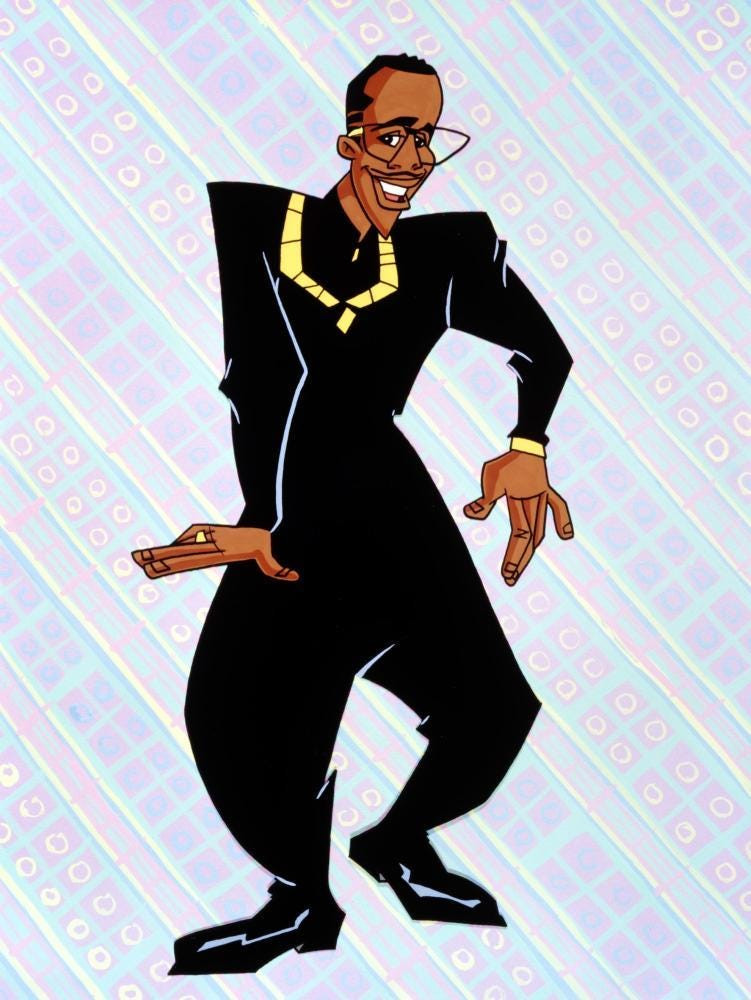 MC Hammer demonstrating body isolations
MC Hammer demonstrating body isolations
2.1 Breaking Down The Footwork: Steps and Techniques
The footwork in the “Hammer Dance” is characterized by its speed, precision, and rhythmic complexity. Key steps and techniques include:
| Step | Description | Technique Tips |
|---|---|---|
| Slide Steps | Smooth, gliding movements across the floor. | Keep your weight low and maintain a consistent rhythm. |
| Quick Steps | Fast, compact steps performed in place or while traveling. | Focus on accuracy and timing to maintain clarity. |
| Pivot Turns | Rapid rotations on the ball of the foot. | Use your core for stability and maintain a consistent speed. |
| Jump Footwork | Adding small jumps in between steps to create a bounce and change elevations | Make sure you are landing softly on your feet and keeping your body light |
To master these steps, dancers should focus on building a strong foundation in basic hip-hop footwork, practicing regularly, and paying attention to the rhythm and timing of the music. The discipline he learned during his time in the Navy and the demanding nature of his rehearsals contributed to his signature footwork.
2.2 What Role Do Arm Movements Play in the Dance?
Arm movements play a crucial role in the “Hammer Dance,” adding visual flair and complementing the footwork. Key arm movements include:
- Sharp Gestures: Quick, precise movements that emphasize the rhythm and energy of the dance.
- Isolations: Controlled movements of individual arm segments, such as the wrist, elbow, and shoulder.
- Fluid Waves: Smooth, flowing movements that create a sense of continuity and grace.
- Dynamic Poses: Strong, expressive shapes that punctuate the dance and add visual interest.
These arm movements enhance the overall performance by adding visual complexity and expressiveness. Dancers should focus on synchronizing their arm movements with their footwork and using their arms to communicate the energy and attitude of the dance.
2.3 How To Incorporate Body Isolations Into Your Routine
Body isolations are an essential element of the “Hammer Dance,” adding depth and complexity to the routine. Isolations involve moving individual body parts independently, creating a dynamic and engaging visual effect. How to incorporate body isolations:
- Start with the Basics: Practice isolating individual body parts, such as the head, shoulders, chest, and hips.
- Combine Isolations: Gradually combine different isolations to create more complex movements.
- Synchronize with Music: Coordinate your isolations with the rhythm and accents of the music.
- Add Personal Style: Experiment with different variations and incorporate your own personal flair.
Body isolations add a layer of sophistication to the “Hammer Dance,” making it more visually appealing and expressive. Dancers should focus on developing control and precision in their isolations and using them to enhance the overall impact of their performance.
3. What Are Some Variations Of The “Can’t Touch This” Dance?
Variations of the “Can’t Touch This” dance have evolved over time, reflecting different styles, influences, and creative interpretations. Some notable variations include:
- Hip-Hop Fusion: Blending elements of hip-hop with other dance styles, such as jazz, funk, and contemporary.
- Street Dance Remix: Incorporating street dance moves, such as popping, locking, and breakdancing.
- Contemporary Interpretation: Adapting the dance for contemporary dance settings, emphasizing fluidity and emotional expression.
- Parody and Humor: Creating comedic versions of the dance, often incorporating exaggerated movements and humorous gestures.
These variations demonstrate the versatility and enduring appeal of the “Can’t Touch This” dance, allowing dancers to express their creativity and connect with the music in new and exciting ways.
 MC Hammer and dancers in a street dance setting
MC Hammer and dancers in a street dance setting
3.1 How Can You Fuse Hip-Hop With Other Dance Styles?
Fusing hip-hop with other dance styles can create unique and innovative routines. Here’s how:
- Identify Complementary Elements: Look for shared elements between hip-hop and other styles, such as rhythm, energy, and expressiveness.
- Incorporate Signature Moves: Blend signature moves from each style to create a seamless fusion.
- Experiment with Music: Choose music that reflects the blended styles, or remix existing tracks to highlight the fusion.
- Develop Transitions: Create smooth transitions between different styles to maintain continuity and flow.
For example, a hip-hop and ballet fusion might incorporate the sharp, angular movements of hip-hop with the graceful lines and extensions of ballet. This approach allows dancers to explore new creative possibilities and push the boundaries of traditional dance forms.
3.2 What Is The Role of Street Dance In Remixing The Classics?
Street dance plays a significant role in remixing classic dances like “Can’t Touch This” by adding contemporary flavor and energy. The dance includes:
- Popping: A technique of quickly contracting and relaxing muscles to create jerky movements.
- Locking: Involves freezing in a particular position and then continuing at the same speed.
- Breaking: Also known as breakdancing, incorporating acrobatic moves and stylized steps.
- Waacking: Involves stylized poses and fast arm movements, often performed to disco music.
Street dance adds a fresh, modern twist to classic routines, making them more appealing to contemporary audiences. Dancers can use street dance techniques to enhance the rhythm, visual impact, and overall energy of their performances.
3.3 How Do Contemporary Interpretations Add Emotional Depth?
Contemporary interpretations of the “Can’t Touch This” dance can add emotional depth by:
- Exploring Expressive Movement: Using fluid, expressive movements to convey a range of emotions.
- Incorporating Personal Narratives: Infusing the dance with personal stories and experiences.
- Experimenting with Music and Sound: Choosing music and soundscapes that evoke specific emotions.
- Creating Dynamic Contrast: Alternating between high-energy and low-energy movements to create emotional tension.
Contemporary interpretations allow dancers to connect with the music and the audience on a deeper level, transforming a fun, energetic routine into a powerful and moving artistic statement.
4. What Are The Cultural And Social Influences On The Dance?
The “Can’t Touch This” dance is deeply rooted in cultural and social influences, reflecting the spirit of the late 20th century and the evolution of hip-hop culture. It incorporates social influences such as:
- Hip-Hop Culture: The dance is a product of hip-hop culture, which emerged in the 1970s and 1980s in African American communities in New York City.
- Pop Music: The song “U Can’t Touch This” blended hip-hop with pop elements, making it accessible to a wider audience.
- Fashion Trends: The Hammer pants became a defining fashion statement of the early 90s, reflecting the era’s bold and expressive style.
- Social Commentary: The dance and song also contained elements of social commentary, addressing issues of identity, empowerment, and cultural pride.
These cultural and social influences shaped the dance and contributed to its lasting impact on popular culture.
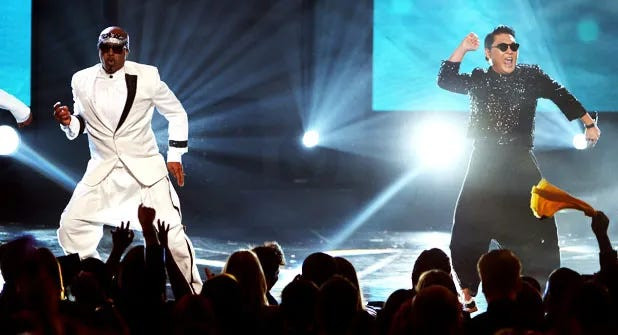 MC Hammer performing at a social event
MC Hammer performing at a social event
4.1 Exploring The Roots In Hip-Hop Culture
The “Can’t Touch This” dance is firmly rooted in hip-hop culture, which has significantly influenced the dance’s style, rhythm, and attitude. The dance:
- Reflects Hip-Hop’s Energy: Captures the high-energy and dynamic movements characteristic of hip-hop dance.
- Incorporates Street Styles: Includes elements of street dance styles, such as popping, locking, and breaking.
- Expresses Urban Identity: Reflects the urban identity and cultural pride associated with hip-hop.
- Celebrates Individuality: Encourages dancers to express their individuality and personal style.
Hip-hop culture provided the foundation for the “Can’t Touch This” dance, giving it a unique and authentic voice that resonated with audiences worldwide.
4.2 How Did Pop Music Influence The Dance’s Popularity?
Pop music played a crucial role in influencing the popularity of the “Can’t Touch This” dance by:
- Expanding its Reach: Blending hip-hop with pop elements, such as catchy melodies and accessible rhythms.
- Attracting Mainstream Audiences: Appealing to a broader audience beyond traditional hip-hop fans.
- Promoting Commercial Success: Increasing the song’s commercial success and exposure.
- Creating Memorable Hooks: Incorporating memorable hooks and lyrics that made the dance more accessible and engaging.
Pop music helped the “Can’t Touch This” dance cross over into the mainstream, making it a global phenomenon that transcended cultural and linguistic barriers.
4.3 What Was The Impact of Fashion Trends On The Dance?
Fashion trends had a significant impact on the “Can’t Touch This” dance, particularly through the iconic Hammer pants. These pants:
- Became a Visual Symbol: Became a visual symbol of the dance and the era in which it emerged.
- Influenced Dance Attire: Influenced dance attire by emphasizing comfort, freedom of movement, and self-expression.
- Created a Fashion Craze: Created a fashion craze, with fans around the world adopting Hammer pants.
- Reinforced Cultural Identity: Reinforced the cultural identity and sense of belonging among fans of the dance and music.
Fashion trends helped to amplify the dance’s impact, making it a visual and cultural phenomenon that captured the imagination of people worldwide.
5. How Can You Learn “Can’t Touch This” Dance Moves Today?
Learning the “Can’t Touch This” dance moves today is easier than ever, thanks to the abundance of online resources, dance classes, and community events. Here are several options:
- Online Tutorials: Numerous online tutorials provide step-by-step instructions, making it easy to learn at your own pace.
- Dance Classes: Many dance studios offer classes in hip-hop and pop dance styles, where you can learn from experienced instructors.
- Community Events: Participate in community dance events and workshops to learn the moves and connect with other dance enthusiasts.
- Dance Apps: There are dance apps that can also help teach you the dance with practice and repetition.
These resources make the “Can’t Touch This” dance accessible to dancers of all levels, allowing them to experience the joy and energy of this iconic routine.
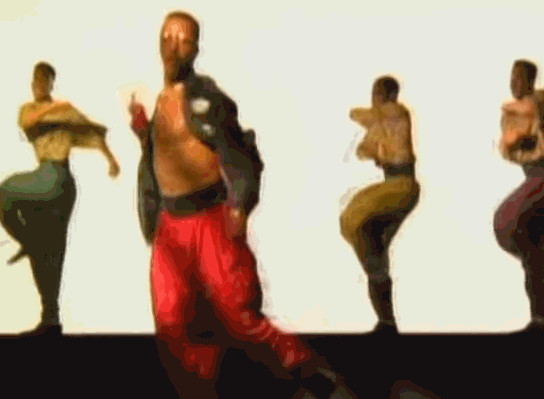 Dancers participating in an online tutorial
Dancers participating in an online tutorial
5.1 Where To Find The Best Online Tutorials
Finding the best online tutorials for learning the “Can’t Touch This” dance moves involves researching and selecting resources that offer clear instruction, high-quality visuals, and engaging content. Here are some places to find the best tutorials:
- YouTube: YouTube is a treasure trove of dance tutorials, with many instructors offering step-by-step guidance.
- Online Dance Platforms: Platforms like Skillshare and Udemy offer comprehensive dance courses, often taught by professional instructors.
- Dance Studio Websites: Many dance studios offer online classes and tutorials on their websites, providing access to experienced teachers.
- Social Media: Social media platforms like Instagram and TikTok can be great sources for short, engaging dance tutorials.
When selecting online tutorials, consider the instructor’s experience, the quality of the visuals, and the clarity of the instructions. Look for tutorials that break down the moves into manageable steps and provide tips for mastering each element of the dance.
5.2 What Are The Benefits Of Joining Dance Classes?
Joining dance classes offers numerous benefits for learning the “Can’t Touch This” dance moves, including:
- Expert Instruction: Access to experienced instructors who can provide personalized guidance and feedback.
- Structured Learning: A structured learning environment that progresses from basic to advanced techniques.
- Social Interaction: Opportunities to connect with other dance enthusiasts and build a supportive community.
- Physical Fitness: A fun and effective way to improve your physical fitness and overall well-being.
Dance classes provide a comprehensive learning experience that can help you master the “Can’t Touch This” dance moves and develop your overall dance skills.
5.3 How To Find Community Events And Workshops Near You
Finding community events and workshops near you is a great way to learn the “Can’t Touch This” dance moves and connect with other dance enthusiasts. Here’s how:
- Local Dance Studios: Check with local dance studios for upcoming workshops and events.
- Community Centers: Community centers often host dance classes and events for people of all ages and skill levels.
- Social Media: Follow local dance groups and organizations on social media to stay informed about upcoming events.
- Online Event Platforms: Use online event platforms like Eventbrite and Meetup to search for dance events in your area.
Attending community events and workshops is a fun and engaging way to learn the “Can’t Touch This” dance moves and become part of a vibrant dance community.
6. How Can You Incorporate “Can’t Touch This” Moves Into Your Fitness Routine?
Incorporating “Can’t Touch This” dance moves into your fitness routine is a fun and effective way to get a full-body workout while enjoying the music and energy of this iconic dance. Here are ways you can incorporate the dance moves:
- Cardio Warm-Up: Use the dance moves as a cardio warm-up to get your heart rate up and prepare your muscles for more intense exercise.
- Full-Body Workout: Incorporate the moves into a full-body workout, focusing on different muscle groups and movement patterns.
- Interval Training: Use the dance moves as part of an interval training routine, alternating between high-intensity bursts and periods of rest.
- Cool-Down: Use the dance moves as a cool-down to lower your heart rate and stretch your muscles after a workout.
By incorporating “Can’t Touch This” dance moves into your fitness routine, you can make exercise more enjoyable and stay motivated to reach your fitness goals.
 A fitness class incorporating dance moves
A fitness class incorporating dance moves
6.1 What Are The Physical Benefits Of Dancing?
Dancing offers numerous physical benefits, making it a great way to improve your overall health and well-being. The benefits include:
- Cardiovascular Health: Dancing can improve your cardiovascular health by increasing your heart rate and improving circulation.
- Muscle Strength and Endurance: Dancing can strengthen your muscles and improve your endurance.
- Flexibility and Balance: Dancing can improve your flexibility and balance, reducing your risk of injuries.
- Weight Management: Dancing can help you manage your weight by burning calories and boosting your metabolism.
According to research from the Albert Einstein College of Medicine published in October 2016, dancing can also reduce your risk of chronic diseases, such as heart disease, diabetes, and obesity.
6.2 How To Create A Dance-Based Warm-Up Routine
Creating a dance-based warm-up routine involves selecting dance moves that gradually increase your heart rate, warm up your muscles, and prepare your body for more intense exercise. Here’s how:
- Start with Gentle Movements: Begin with gentle movements, such as swaying, marching, and shoulder rolls.
- Incorporate Dynamic Stretches: Include dynamic stretches, such as leg swings, arm circles, and torso twists.
- Increase the Intensity: Gradually increase the intensity of the movements, adding faster steps and more energetic gestures.
- Focus on Key Muscle Groups: Focus on key muscle groups, such as your legs, arms, and core.
A well-designed dance-based warm-up routine can help you prevent injuries, improve your performance, and make your workout more enjoyable.
6.3 How Can Dance Improve Your Overall Well-Being?
Dance can improve your overall well-being by:
- Reducing Stress: Dancing can reduce stress by releasing endorphins and promoting relaxation.
- Boosting Mood: Dancing can boost your mood by increasing your sense of well-being and self-esteem.
- Improving Cognitive Function: Dancing can improve your cognitive function by challenging your brain and improving your memory.
- Enhancing Social Connections: Dancing can enhance social connections by providing opportunities to interact with other people and build relationships.
Dance is a holistic activity that can improve your physical, mental, and emotional health, leading to a greater sense of well-being and fulfillment.
7. What Role Does Improvisation Play In Mastering The Dance?
Improvisation plays a crucial role in mastering the “Can’t Touch This” dance by allowing dancers to explore their creativity, develop their personal style, and connect with the music on a deeper level. It allows you to do the following:
- Encourages Exploration: Encourages you to experiment with new moves and variations.
- Develops Musicality: Helps you to develop musicality by responding to the rhythm and accents of the music.
- Enhances Expressiveness: Enhances expressiveness by allowing you to communicate your emotions and ideas through movement.
- Builds Confidence: Builds confidence by challenging you to step outside your comfort zone and take risks.
Improvisation is an essential tool for mastering the “Can’t Touch This” dance, allowing dancers to make the routine their own and express their unique artistic vision.
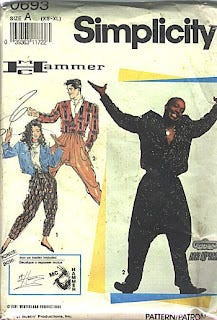 A dancer improvising to music
A dancer improvising to music
7.1 How To Develop Your Own Dance Style Through Improvisation
Developing your own dance style through improvisation involves:
- Exploring Different Movements: Experimenting with a wide range of movements, from basic steps to more complex combinations.
- Finding Your Unique Voice: Identifying the movements and gestures that feel most natural and expressive for you.
- Incorporating Personal Influences: Drawing inspiration from your personal experiences, cultural background, and artistic influences.
- Practicing Regularly: Dedicating time to regular improvisation sessions to refine your style and build your confidence.
By embracing improvisation, you can discover your unique dance style and express yourself in a way that is authentic and meaningful.
7.2 What Are The Key Elements Of A Good Improvisation Session?
The key elements of a good improvisation session include:
- A Relaxed and Supportive Environment: Creating a space where you feel comfortable taking risks and exploring new ideas.
- Clear Objectives: Setting clear objectives for the session, such as exploring a specific movement quality or emotion.
- Engaging Music: Choosing music that inspires you and supports your creative exploration.
- Constructive Feedback: Seeking constructive feedback from other dancers or instructors to help you improve.
A well-structured improvisation session can help you develop your dance skills, enhance your creativity, and deepen your connection with the music.
7.3 How Can Improvisation Enhance Your Choreography Skills?
Improvisation can enhance your choreography skills by:
- Generating New Ideas: Providing a source of fresh and original ideas for choreography.
- Developing Movement Vocabulary: Expanding your movement vocabulary and increasing your ability to express yourself through dance.
- Improving Musicality: Enhancing your musicality by allowing you to respond to the nuances of the music.
- Creating Authentic Expression: Helping you to create choreography that is authentic, expressive, and meaningful.
By incorporating improvisation into your choreography process, you can create dances that are both innovative and deeply personal.
8. What Are Some Common Mistakes To Avoid When Learning The Moves?
When learning the “Can’t Touch This” dance moves, it’s important to be aware of common mistakes and take steps to avoid them. Here are some common mistakes:
- Rushing The Steps: Trying to learn the steps too quickly, without mastering the fundamentals.
- Ignoring Body Alignment: Neglecting proper body alignment, which can lead to injuries and poor technique.
- Lacking Musicality: Failing to connect with the music and express the rhythm and energy of the dance.
- Being Afraid To Experiment: Being afraid to experiment and add your own personal style to the dance.
By avoiding these common mistakes, you can improve your learning experience, develop your skills, and fully enjoy the “Can’t Touch This” dance.
 A dancer struggling with body alignment
A dancer struggling with body alignment
8.1 The Importance Of Correct Body Alignment
Correct body alignment is crucial for learning the “Can’t Touch This” dance moves because it:
- Prevents Injuries: Reduces your risk of injuries by ensuring that your body is properly supported and balanced.
- Improves Technique: Enhances your technique by allowing you to move more efficiently and effectively.
- Increases Flexibility: Improves your flexibility by allowing you to stretch your muscles safely and effectively.
- Enhances Balance: Enhances your balance by improving your posture and stability.
Focusing on correct body alignment can help you learn the “Can’t Touch This” dance moves safely and effectively, while also improving your overall dance skills.
8.2 How To Stay Motivated When Learning Difficult Steps
Staying motivated when learning difficult steps involves:
- Setting Realistic Goals: Set realistic goals for yourself and celebrate your progress along the way.
- Breaking Down The Steps: Break down the steps into smaller, more manageable chunks.
- Practicing Regularly: Dedicate time to regular practice sessions to reinforce your learning.
- Finding a Dance Buddy: Find a dance buddy to practice with and provide support and encouragement.
By staying motivated and persistent, you can overcome challenges and achieve your goals in learning the “Can’t Touch This” dance moves.
8.3 What To Do When You Feel Discouraged?
When you feel discouraged, it’s important to:
- Take A Break: Take a break from dancing to rest your mind and body.
- Reflect On Your Progress: Reflect on your progress and remember how far you’ve come.
- Seek Support: Seek support from other dancers, instructors, or friends and family.
- Focus On The Joy Of Dancing: Focus on the joy of dancing and remember why you started in the first place.
By taking care of yourself and seeking support, you can overcome discouragement and continue to grow as a dancer.
9. How Has “Can’t Touch This” Influenced Modern Pop Culture?
“Can’t Touch This” has had a lasting influence on modern pop culture, shaping music, dance, fashion, and entertainment for decades. The pop culture influence includes:
- Music: The song has been sampled, remixed, and covered by countless artists, demonstrating its enduring appeal.
- Dance: The dance moves have been imitated, parodied, and incorporated into various forms of entertainment.
- Fashion: The Hammer pants have made a comeback in recent years, demonstrating their enduring influence on fashion trends.
- Entertainment: The song and dance have been featured in movies, television shows, commercials, and video games, solidifying their place in popular culture.
“Can’t Touch This” remains a cultural touchstone, evoking nostalgia and a sense of fun for generations of fans.
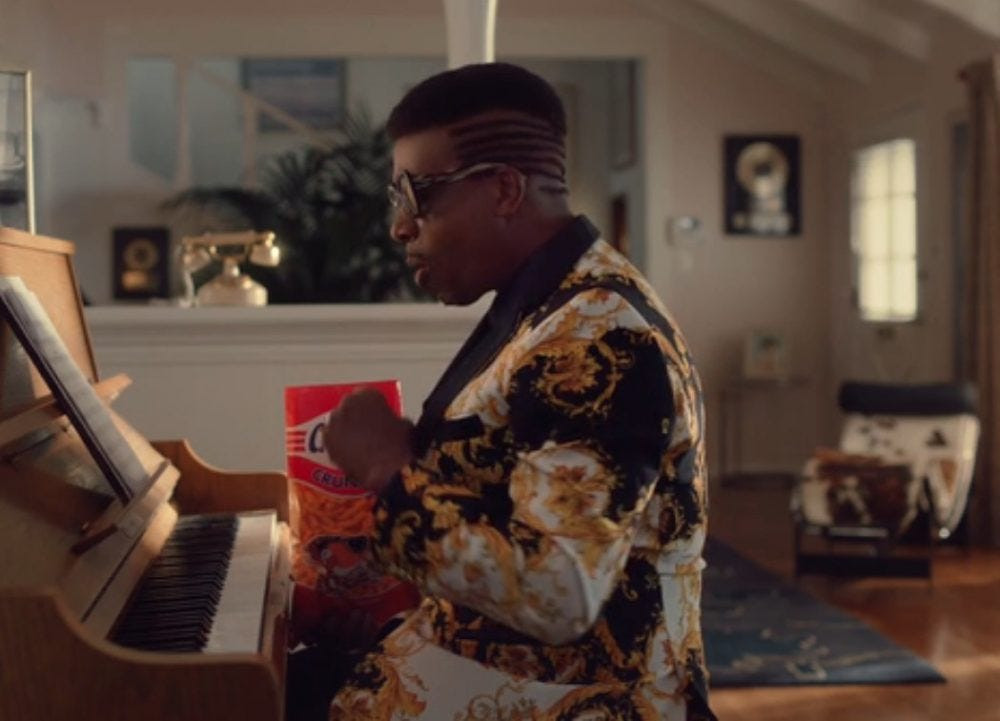 MC Hammer in a modern commercial
MC Hammer in a modern commercial
9.1 Enduring Appeal Of The Song And Dance
The enduring appeal of the “Can’t Touch This” song and dance lies in its:
- Catchy Melody: Memorable melody that has been sampled, remixed, and covered by countless artists.
- Energetic Dance Moves: Infectious dance moves that have been imitated, parodied, and incorporated into various forms of entertainment.
- Unique Style: Distinctive style that reflects the spirit of the early 90s and the evolution of hip-hop culture.
- Nostalgia: Evokes nostalgia and a sense of fun for generations of fans.
These elements have combined to make “Can’t Touch This” a timeless classic that continues to resonate with audiences worldwide.
9.2 The Revival Of Hammer Pants In Modern Fashion
The revival of Hammer pants in modern fashion demonstrates their enduring influence on fashion trends. Here’s how:
- Comfort and Style: Combining comfort and style, making them appealing to a wide range of people.
- Versatility: Being versatile, able to be dressed up or down for various occasions.
- Nostalgic Appeal: Evoking nostalgia for the early 90s and the era of MC Hammer.
- Self-Expression: Providing a form of self-expression, allowing people to showcase their individuality and creativity.
The return of Hammer pants highlights the cyclical nature of fashion and the enduring impact of cultural icons.
9.3 Examples Of The Dance In Contemporary Media
Examples of the “Can’t Touch This” dance in contemporary media include:
- Movies and Television Shows: Featured in movies and television shows, often as a comedic or nostalgic element.
- Commercials: Used in commercials to promote products and services, leveraging its iconic status.
- Video Games: Incorporated into video games as a dance move or character animation.
- Social Media Challenges: Recreated in social media challenges, with people sharing their own versions of the dance.
These examples demonstrate the enduring relevance and popularity of the “Can’t Touch This” dance in modern pop culture.
10. Where Can You Connect With Other “Can’t Touch This” Dance Enthusiasts?
Connecting with other “Can’t Touch This” dance enthusiasts can enhance your learning experience, provide inspiration, and create a sense of community.
- Online Forums: Join online forums and discussion groups dedicated to dance, where you can connect with other fans and share your experiences.
- Social Media Groups: Participate in social media groups focused on dance and hip-hop culture, where you can share videos, photos, and insights.
- Local Dance Communities: Attend local dance events and workshops to meet other dancers in person.
- ten-dance.com Community: At ten-dance.com, we offer a platform to connect with other dancers, share your progress, and learn from experienced instructors.
By connecting with other “Can’t Touch This” dance enthusiasts, you can enrich your dance journey and become part of a supportive and inspiring community.
 Dancers connecting at a workshop
Dancers connecting at a workshop
10.1 How To Find Dance Communities Online
Finding dance communities online involves:
- Using Search Engines: Using search engines like Google to find online forums, social media groups, and websites dedicated to dance.
- Exploring Social Media: Exploring social media platforms like Facebook, Instagram, and TikTok to find dance communities and influencers.
- Checking Dance Studio Websites: Checking dance studio websites for online forums, blogs, and social media links.
- Joining Online Dance Platforms: Joining online dance platforms like ten-dance.com, which offer communities, resources, and opportunities to connect with other dancers.
By using these strategies, you can find vibrant dance communities online and connect with people who share your passion for dance.
10.2 Benefits Of Joining A Dance Community
Joining a dance community offers numerous benefits, including:
- Support and Encouragement: Providing support and encouragement, helping you to stay motivated and overcome challenges.
- Knowledge and Expertise: Sharing knowledge and expertise, allowing you to learn from experienced dancers and instructors.
- Inspiration and Creativity: Inspiring creativity, encouraging you to experiment with new moves and develop your own style.
- Friendship and Social Connection: Fostering friendship and social connection, creating a sense of belonging and community.
A dance community can enrich your dance journey and help you grow as a dancer and as a person.
10.3 How ten-dance.com Can Help You Connect With Dancers
ten-dance.com provides a platform for dancers of all levels to connect, share their experiences, and learn from each other. Here’s how:
- **Community
